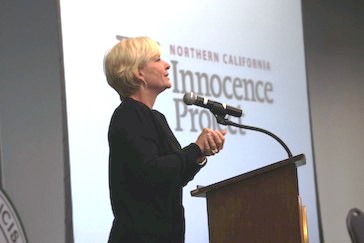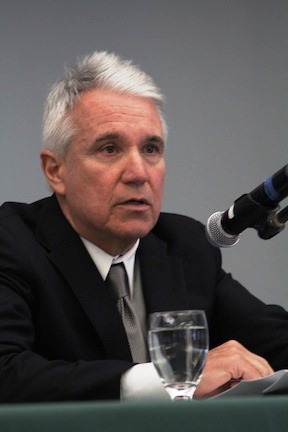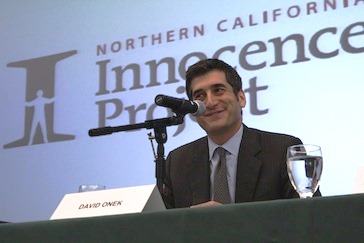
NCIP Executive Director David Onek welcomes attendees and facilitates discussion with district attorneys.
Nearly 200 people attended the Northern California Innocence Project’s (NCIP) Eyewitness Identification Best Practices Symposium at the University of San Francisco (USF) on May 21, 2014. The symposium, sponsored by a Flom Incubator Grant from the Skadden Fellowship Foundation, brought together police chiefs, district attorneys, social scientists and criminal justice reform advocates to discuss best practices for eyewitness identification procedures in California, and inspired some jurisdictions to make changes to their existing procedures.
Hosted by NCIP at Santa Clara University School of Law and the International Institute of Criminal Justice Leadership at USF School of Law, the symposium featured an impressive lineup of speakers.
Jennifer Thompson, author of New York Times Bestseller “Picking Cotton,” is a sexual assault victim who wrongly identified her attacker. Thompson shared her harrowing experience with attendees and discussed her advocacy for the use of best practices in identification procedures.
San Francisco District Attorney George Gascon, Alameda District Attorney Nancy O’Malley, and Santa Clara District Attorney Jeff Rosen discussed their use of best practices. Rosen reported that in ten years of use, the office has not seen cost increases or had a single case overturned on the basis of an improperly suggestive identification procedure.
Dr. Jennifer Dysart, an Associate Professor of Psychology at the John Jay College of Criminal Justice, spoke about her fifteen years of research into the psychological processes involved in eyewitness identification. She explained how some traditional identification procedures can inadvertently contribute to the mistaken identification of innocent people and how the implementation of safeguards may reduce these errors.
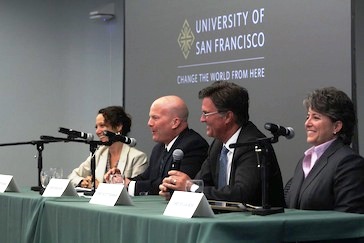
From Left: NCIP Assistant Legal Director Maitreya Badami facilitates a discussion with police chiefs Greg Suhr, Scott Seaman and Silvia Moir about how best practices have helped secure more reliable identifications.
San Francisco Police Chief Greg Suhr, Los Gatos Police Chief Scott Seaman, and El Cerrito Police Chief Silvia Moir discussed their use of best practices and how they have helped to secure more reliable identifications that are less subject to challenges in court.
Numerous studies have shown that eyewitness identification of a suspect is a problematic form of evidence – eyewitness misidentification has played a part in nearly 75% of wrongful convictions overturned through DNA testing. Nevertheless, eyewitness testimony is an incredibly influential form of evidence in criminal law and very compelling to a jury.
The unreliable nature of eyewitness testimony has prompted NCIP to advocate for the use of best practices in handling eyewitnesses and their accounts of crimes. Suggested reforms include a “blind” administration of lineups, in which the person who administers the lineup does not know who the suspect is. Other changes include lineups that do not unjustly single out a suspect and a randomization of photo lineups of suspects.
As a result of the symposium, some jurisdictions already report making changes to their field admonishment language, and moving closer to making double-blind identifications the standard protocol.
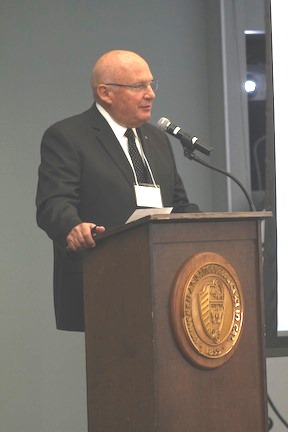
Tony Ribera, director of the International Institute of Criminal Justice Leadership at USF welcomes symposium attendees.
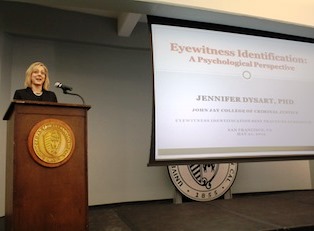
Dr. Dysart discusses her research and explains how some identifications can inadvertently contribute to mistaken identifications.
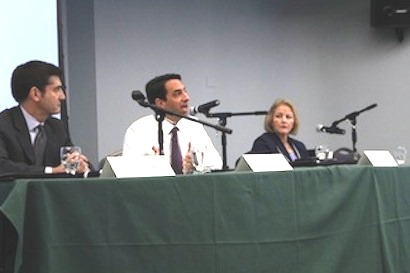
From left: David Onek continues the discussion of best practices with Santa Clara County District Attorney Jeff Rosen and Alameda County District Attorney Nancy O’Malley.
Media Coverage of the Symposium
KQED:
KGO:
KTVU:
KGO AM:
